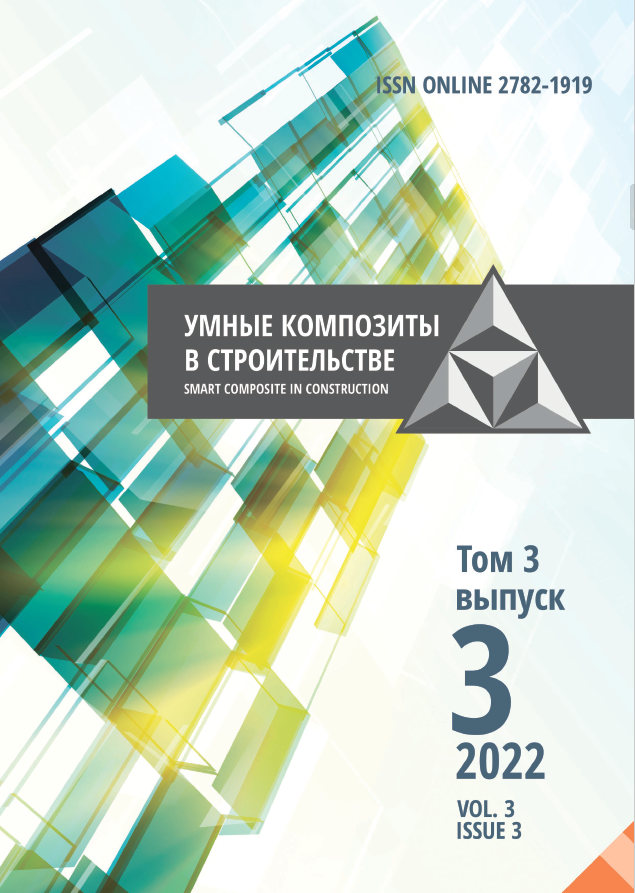Moscow, Moscow, Russian Federation
Ivanovo, Ivanovo, Russian Federation
Ivanovo, Ivanovo, Russian Federation
Ivanovo, Ivanovo, Russian Federation
Air is one of the most promising sources of extraction of scattered thermal energy from the surrounding space. An energy-saving and environmentally efficient technology for obtaining dissipated thermal energy from the ambient air and converting it into a form of energy convenient for use is an air heat pump (AHP), which can extract heat even at -30 °C. The heat pump does not create thermal energy, but pumps it from the environment for heating buildings, water or air. This process takes place only with the supply of external energy (usually electricity) to the heat pump. The electricity consumed by the AHP compressor is only used to move the freon in a closed circuit consisting of copper tubes with different cross sections. Determination of the volume of incoming air to the evaporator of the air heat pump is a particularly important parameter for controlling the processes of heat and mass transfer and improving the performance of the air heat pump system (AHPS). This knowledge allows us to substantiate the establishment of computational mathematical models for predicting the required thermal power (performance) of a heat pump.
air heat pump, heat energy transfer, air consumption
1. Zakirov, D.G., Rybin, A.I. & Morozov, B.Z. (1991) Environmental resource-saving technology using heat pumps. M.: Ugol (in Russian).
2. Vezerishvili, O.Sh. & Meladze, N.V. (1994) Energy-saving heat pump systems for heat and cold supply. M.: Izdatelstvo MEI (in Russian).
3. Falikov, V.S. (2001) Energy saving in systems of heat and water supply of buildings. M.: GUP VIMI (in Russian).
4. Filippov, S.V., Dilman, M.D. & Ionov, M.S. (2011) Efficiency of using heat pumps for heat supply of low rise buildings, Teploenergetika, (11), pp.12-19 (in Russian).
5. Mikheev, M.A. (1956) Fundamentals of heat transfer. M.: Gosenergoizdat (in Russian).
6. Zakirov, D.G. & Rybin, A.A. (2015) Use of low potential heat. M.: Izdatelstvo "Rusayns"(in Russian).
7. Sokolov, E.Ya. & Brodyansky, V.M. (1984) Energy bases of heat transformation and cooling processes. M.: Energoatomizdat (in Russian).
8. Zakirov, D.G., Fayzrakhmanov, R.A., Mukhamedshin, M.A., Nikolaev, A.V. & Ryumkin, A.A. (2018) Development and implementation of technologies for the use of low-grade heat, Tekhnologii I tekhnicheskiye sredstva mekhanizirovannogo proizvodstva produktsii rasteniyevodstva i zhivotnovodstva, 1(94), pp. 85-91 (in Russian).
9. Bubalis, E. & Makarevicius, V. (1990) Energy transfer processes in heat pumps. Vilnyus: Izdatelstvo Mokslas (in Russian).
10. Dubrovin, I.V. (1960) Influence of the temperature factor on heat transfer, Teploenergetika, (11), pp. 69-74 (in Russian).
11. Mitskevich, A.I. (1965) Efficiency of heat transfer surfaces. Heat and mass transfer. Minsk: Nauka I tekhnika(in Russian).
12. Yudin, V.F. & Tokhtarova, L.S. (1971) Influence of thermal conductivity of ribs and coolant on heat transfer of finned bundles during transverse washing, Teploenergetika, (9), pp. 66-68 (in Russian).
13. Kalnin, I.M., Bykov, A.V. & Tsirlin, B.L. (1978) Choice of thermodynamic cycles and working substances for heat pumps, Tezisy dokladov II Vsesoyuznoy nauchno-tekhnicheskoy konferentsii po kholodilnomu mashinostroyeniyu. M.: TsINTIkhimneftemash (in Russian).
14. Arkharov, A.M. & Shishov, V.V. (2014) Analysis of low-temperature refrigeration cycles using the entropy-statistical method, Kholodilnaya tekhnika, (8), pp. 50-53 (in Russian).
15. Meeting heat pump operating instructions [online]. Available at: https://solar-dom.com/upload/iblock/41e/41eafa9b94953cd1039a298cc805c807.pdf (in Russian).
16. GOST R ISO 17584–2015. Properties of refrigerants (in Russian).
17. Fedosov, S.V., Fedoseev, V.N. & Zaitseva, I.A. (2020) Analysis and selection of environmentally safe refrigerants for building heat supply systems with air heat pumps, Sovremennyye naukoyemkiye tekhnologii. Regionalnoye prilozheniye, 1(61), pp. 120-129 (in Russian).
18. Akulich, D.A. & Timofeev, B.D. (2017) Transfer of refrigeration centrifugal machines and compressor equipment to ozone-safe refrigerants in Belarus, Vestnik mezhdunarodnoy akademii kholoda, (2), pp. 50-52. DOI:https://doi.org/10.21047/1606-4313-2017-16-2-50-52 (in Russian).
19. Zakirov, D.G. (1995) Energy saving and environmental safety of small power facilitie. M.: Nedra (in Russian).
20. Zhelezny, V.P. & Semenyuk, Yu.V. (2012) Working bodies of vapor compression refrigeration machines: properties, analysis, application. Odessa: Feniks(in Russian).
21. Musaev, A.A., Boyarsky, M.Yu. & Brodyansky, V.M. (1978) Experimental study of a low-temperature single-stage refrigeration plant operating on a mixture of refrigerants, Kholodilnaya tekhnika, (12), pp.10-14 (in Russian).
22. Lukyanenko, A.V. & Byrdin, A.P. (2009) Design of physical parameters of condensers of heat pump installations in heat supply systems, Vestnik Voronezhskogo gosudarstvennogo tekhnicheskogo universiteta, 5(10), pp. 196-200 (in Russian).
23. Shcherba, V.E. & Bolshtyansky, A.P. (1983) Analytical calculation of the injection process in a positive displacement compressor, Izvestiya vuzov. Energetika, (11), pp. 112-114 (in Russian).
24. Litovsky, E.I. & Pustovalov, Yu.V. (1982) Vapor compression heat pump installations. M.: Energoizdat (in Russian).
25. Meshcheryakov, F.E. (1975) Fundamentals of refrigeration engineering and refrigeration technology. M.: Izdatelstvo «Pishchevaya promyshlennost» (in Russian).
26. Ponomarev, V.N. & Sholokhov, A.V. (1993) Analysis of the characteristics of the compressor of a heat pump installation: work on various working bodies, Montazh i spetsialnyye raboty v stroitelstve, (10), pp. 9-11 (in Russian).
27. Migai, V.K. (1963) Influence of non-uniformity of heat transfer along the height of the fin on its efficiency, Inzhenerno-fizicheskiy zhurnal, (3), pp. 51-57 (in Russian).
28. Kutateladze, S.S. (1953) Heat transfer during condensation and boiling. L.: Mashgiz (in Russian).
29. Fedosov, S.V., Fedoseev, V.N. & Zaitseva, I.A. (2020) Multicriteria process of modeling heat and mass transfer in air heat pump systems for the purpose of energy-saving solutions by the method of hierarchy analysis, Sovremennyye naukoyemkiye tekhnologii. Regionalnoye prilozheniye, 3(63), pp. 98-111 (in Russian).
30. Tabunshchikov, A.Yu. & Brodach, M.M. (2002) Mathematical modeling and optimization of thermal efficiency of buildings. M.: AVOK-Press.







